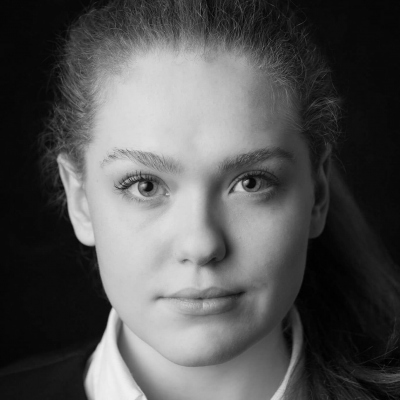Who is intended to benefit from 50% tax costs? Certainly not taxpayers
The right to claim higher tax costs at 50% has recently been one of the most problematic issues in the relationship between tax authorities and taxpayers. At the beginning of the year this limit was raised twice, but the list of persons entitled to claim such costs was narrowed. Moreover, the tax authorities are consistently doing everything they can to stop taxpayers from taking advantage of this rate. So who is the 50% write-off intended for, and what are the criteria for eligibility?
In principle the higher rate of tax costs is intended for artists
Legislators decided to allocate a special rate of 50% of tax costs to a specific taxpayer group—artists. Under the Personal Income Tax Act, artists have the right to a higher rate of tax costs only with respect to revenue gained among other things by exercising or disposing of copyright.
At the same time, legislators have somehow selected the artists that enjoy this entitlement, by providing a closed list of the kind of activities to which the higher tax cost rate applies. These costs can be claimed up to PLN 85,528 per year (through 31 December 2017 the limit for 50% tax costs was half of that amount, PLN 42,764).
Requirements for 50% tax costs
It would seem that to qualify for this 50% tax cost rate it is enough to be an artist (conducting one of the types of activity listed in the act) with revenue earned through disposal of copyright to a work. There are no other formal requirements for taxpayers.
Artists often work on the basis of employment contracts or on a freelance basis. For many years the tendency on the market was to specify in the appropriate agreements a fee paid to an artist as a percentage for disposal of the artist’s rights to a produced work. Another method was to calculate the fee for disposal of copyright based on records of the time spent creating the work. Both of these methods were approved by the tax authorities and repeatedly confirmed in individual tax rulings.
New limit, and new requirements
As mentioned, the year started well for artists because the amount subject to the 50% tax cost rate was increased, but nevertheless, with no change to the law, the tax authorities’ approach to this entitlement also changed. Tax authorities not only stopped approving the methods previously applied for distinguishing fees paid to artists. They also started to contest all reasonable and accurate attempts by taxpayers and remitters to rationally divide the fees paid into those for transfer of copyright and those for performing other duties under an employment contract or freelance contract.
The tax authorities now consider distinguishing fees in percentage terms to be incorrect. Counting a portion of a fee according to the time an artist spends on the work in question is also ineffective because spending time on a work (in the tax authorities’ view) does not mean creation of that work, and thus does not generate revenue for the artist for which tax costs at 50% apply.
Division of fee only quantitative
In the tax authorities’ view, what should a taxpayer/remitter do to be eligible for the higher rate of tax costs? At the moment the only solution acceptable to tax authorities is distinguishing the fee as a quantity. The tax authorities say that payment for an artistic work actually produced (transfer of copyright) has to be specified as a quantity, clearly and precisely, and only then can the 50% tax cost rate apply to the value calculated in that way, which is part of the overall fee. The tax authorities also expect the employee’s or service provider’s fee to reflect the true value of the work.
The question arises of how this amount should be distinguished in quantitative terms in practice. As the tax authorities wish to eliminate abuse, why do they require artificial distinction of a fixed amount for the artist’s transfer of copyright to the work? This solution leads to further distortion because an artist’s work is dynamic and unpredictable. What should be done in cases where a taxpayer produces a work in one month of a value deemed to be higher than the value of work produced in a different month? Does the objective value of a work produced by an employee/service provider (if it can be determined at all) matter in any way in the context of these provisions? How is determining value in quantitative terms of the fee for transfer of copyright better than a contractual mechanism for determining that fee on a case-by-case basis? Do the authorities expect employer and employee to determine the value of a work each month and on that basis specify the correct portion of the fee for disposal of that work? What happens if the work is worth much more than the employee’s salary for a month, a year, or even several years?
There are no grounds for tax authorities to take away the right to a higher rate of tax costs by contesting the method adopted by a remitter and taxpayer for calculating the fee for transfer of copyright. So long as an employee/service provider conducting an activity specified in the act produces specific intellectual property (subject to copyright) in connection with their duties, and that copyright passes to the employer/client, the tax authorities should not contest the method for calculating the fee for transfer of those rights. Moreover, they should not question the amount of the fee, as this can cause complications, if only in cases where a work is produced in an employment/freelance relationship valued at several times higher than the entire fee of the employee/service provider.
Method in madness?
The tax authorities’ current practice is troubling. This is a severe approach towards taxpayers and remitters wishing to exercise the rights given to them by law. The tax authorities not only contest all logical and rational ideas of remitters and taxpayers for claiming higher tax costs, they also contest settlement calculations for other fiscal years. These settlement calculations were based on generally applicable practice. We hope that administrative courts restore a reasonable approach to this matter, but this will take time.
There is no doubt that legislators specifically intended to give a particular group of taxpayers, artists in particular fields, a privilege in the form of a higher rate of tax costs. Is it justifiable therefore to deliberately hamper exercise of this privilege by illogically and impractically contesting the method of determining the portion of a fee that is due for disposal of copyright? This is unjustified, and also groundless. As the law specifies a finite list of kinds of artists performing activity that is privileged from a tax point of view, it should provide a simple and clear instrument to exercise that right. It would be sensible to award this allowance for all revenue generated in the specified artistic professions. This would resolve at least a considerable portion of interpretational doubts, and would not require taxpayers to use artificial solutions such as the incomprehensible quantitative distinction between a portion of a fee subject to a 50% tax cost rate and the remaining portion of the fee.
Joanna Goryca, Michał Nowacki, legal adviser, tax adviser, Tax practice, Wardyński & Partners

